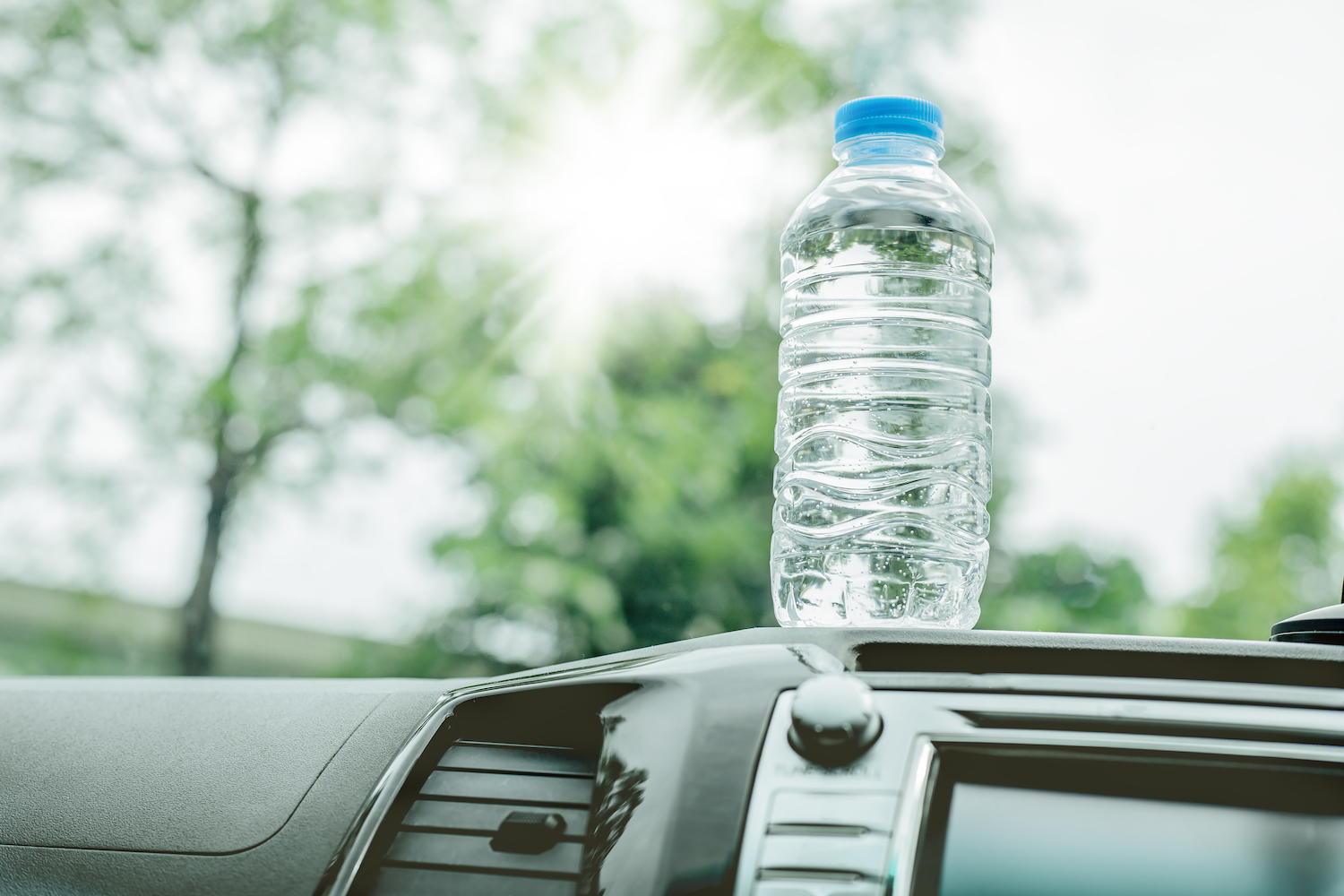Here's How Your Water Bottle Could Start a Fire

Leaving a water bottle sitting in your car sounds benign enough. But on a hot, summer day, the plastic can act as a lens, focusing light into a high-energy beam that's intense enough to burn material like car-seat upholstery.
Last summer, Idaho Power shared its video of a water bottle burning two holes in a car seat. And for this year's World Cup soccer tournament, the Russian water company Holy Water is selling soccer ball-shaped water bottles that can act as perfect light-focusing lenses. In a video published by Fontanka Ru, the ball-shaped bottle is seen focusing light so well that it ignites a box of matches and burns a hole in laminate flooring. [Photos: Top 10 Greatest Explosions Ever]
"The water bottle is acting like a lens that's focusing the light coming through the window," Odile Madden, a materials scientist at the Getty Conservation Institute in Los Angeles, told Live Science.
Light consists of numerous photons, which are subatomic particles that travel in a straight line, Madden said. Eyeglass and microscope lenses direct the photons so they converge on a point. "You can use that to see something better, get it in focus. Or, you can focus a lot of light onto a very small point and concentrate all that energy, and that can cause melting and burning," Madden explained.
Madden witnessed the astonishing power of laser-focused light years ago, when she was experimenting with using lasers to remove clear adhesives from artwork and artifacts. She discovered that the grooves in the adhesive worked to focus the laser and "turned up the power," subsequently burning or etching pits into the glass microscope slides she was using for the experiment. She published her findings in 2005 in the journal Lasers in the Conservation of Artworks.
Everything lined up just right
What surprised Madden about the water bottle examples is that the light passes through the car window first, yet there's still enough heat left to go through the bottle and cause burning. "Conceivably, this would be worse on a hot day or if the window were down, because the window filters the light," she said.
"This is a good illustration of just how much energy there is coming from the sun," said Michael Doutre, a chemist at the Getty Conservation Institute who works with Madden in GCI's Modern and Contemporary Art Research Initiative, which studies plastic, among other materials. "We think of this as a cheap water bottle, but we're unintentionally creating an optically almost-perfect shape" for a lens, Doutre told Live Science.
Sign up for the Live Science daily newsletter now
Get the world’s most fascinating discoveries delivered straight to your inbox.
Doutre said that even after the sunlight passes through the car window, it hits the seat with about 600 watts per square meter of energy — about the same amount of energy from a small electric space heater — but focused on a tiny point that's smaller than a millimeter. A couple of seconds of that focused sunlight can easily heat up vinyl seat material to its decomposition temperature, thereby causing burning, Doutre explained.
But both scientists think it's unlikely that the water bottle could cause the seats to actually catch fire. That's because car materials, including seats, are made to be fire-retardant and self-extinguishing, said Madden. The plastic material many car seats are made out of, polyvinyl chloride, or PVC, doesn't propagate flames well, she said.
For burning to occur, the liquid in the bottle must be clear, so enough light can pass through it; this means that soda and juice drinkers can leave their bottles in the sun if they want — unless the soda is clear. A transparent bottle holding a clear carbonated liquid, like sparkling water or lime soda, could allow light to pass through just like a regular water bottle. "If you get the bubbles on the side, it would gather the light a little bit, but fundamentally it wouldn't really change anything," Doutre said.
For a water bottle to cause a fire, everything must line up perfectly: a smooth, spherical, transparent bottle full of a clear liquid that's placed at just the right point from both the light source and the flammable focal point. Both scientists said they suspect that the chances of that happening by accident are slim.
Nonetheless, said Doutre, "I'm not going to put a water bottle on a stack of paper anymore."
Original article on Live Science.

Kimberly has a bachelor's degree in marine biology from Texas A&M University, a master's degree in biology from Southeastern Louisiana University and a graduate certificate in science communication from the University of California, Santa Cruz. She is a former reference editor for Live Science and Space.com. Her work has appeared in Inside Science, News from Science, the San Jose Mercury and others. Her favorite stories include those about animals and obscurities. A Texas native, Kim now lives in a California redwood forest.









